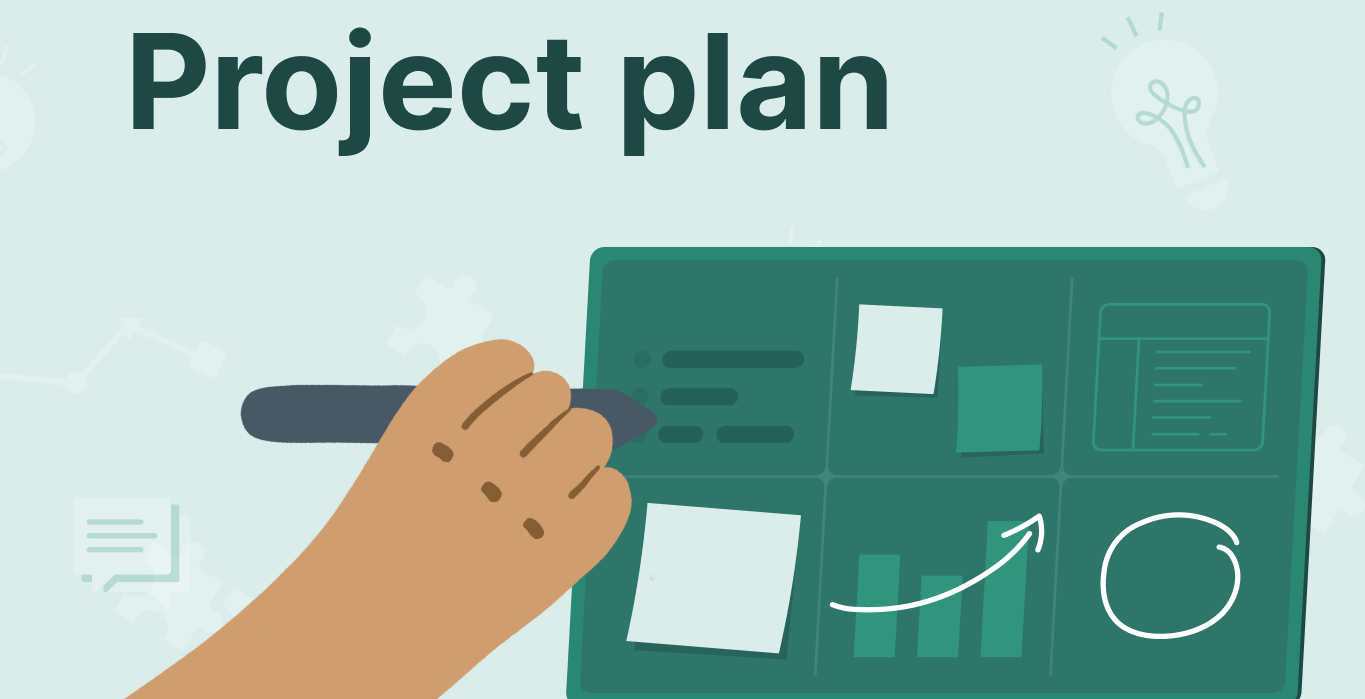Every day a ton of assignments of all sizes accompany every working adult, no matter the job and specialization. You can either hold a meeting, work on product strategy, or write code. However, you can only call some of these assignments projects. Let’s discover what makes a project different from any other task.
A project always consists of 3 elements:
- Scope: what results and products do you expect in the end?
- Schedule: fixed dates for a start and the end of the project.
- Resources: Amount of money, people, and other resources.
These elements aren’t something that could exist independently. See how each of them is affecting the other two:
- The very idea of a project’s existence consists of generating the results mentioned in its scope. Otherwise, the task can not be called a project.
- The end date you select for your project helps you define what successful performance is. Each project has a certain time it has to deliver results by.
- The products a project can produce depend on the resources available.
Moving from idea to action is one of the biggest challenges. We want to share our vision of the right direction from the project start. We believe the proper sequential steps can lead you to the intended goal.
What do you need before you start an IT project?
Modernity dictates its own rules for doing business. Only some products can be launched and supported without the participation of IT specialists. This means that almost every modern company has an in-house or outsourced IT specialist or a whole IT department.
Let’s assume you are at the beginning of a long journey called “an IT project.” Being at this point, what should you think about first? In short, the correctly formulated idea of the project is the key to creating something meaningful in any field of activity, including IT. However, more than an idea is needed to start a successful IT project.
The 7 stages of IT project preparation.
Let’s look at IT project preparation from a broader angle and define the project preparation stages.
1. The idea of project creation
As we already defined, the idea always comes first. It is the source of inspiration and the driver of any project. However, this idea should be supported by real facts and actions.
2. Be confident in project value
Before moving from an idea to its implementation, think about your project’s unique outcome. Weigh up the value it could bring to your company and make sure there is any worth your efforts.
3. Multilevel research
The deep and overall research is the key to big failure prevention. These are the direction of your research:
- Market research. Make sure there is a market for your product or service and enough demand for it.
- Technology stack research. You should define what technologies have to be used to meet the project’s objectives at a set time. Once you’re done with that, you should move to the following:
- Resources research. Make sure the best professionals cover all the technology stack. In case you lack some of them in-house, you can resort to IT companies providing outstaffing services, like Optimum Web.
4. Roadmap
The next step would be a well-thought roadmap creation. Unlike the project plan, which will be described later, a project roadmap is a high-level strategic view that external parties can quickly understand. It doesn’t dig into the day-to-day tasks or detail team members’ responsibilities.
5. Deep task analysis.
You should analyze the project profoundly and plan it in minuscule detail to prevent critical failures during its implementation. Define the project’s main objective and the ways to achieve it. Outline the team member’s roles, deadlines, resources you can allocate, and every detail you can think of.
6. Prototype creation.
Create a fully working prototype of a project \ product before launching its real version. This will help you identify errors in time and prevent them from happening again. You could test how your project will work in a real environment. Furthermore, your clients or investors you’re doing your project for will be able to submit corrections at the stage at which it is still possible.
7. Project budget calculation.
The last but not least stage is calculating your project’s budget correctly. You should take every expense into account, considering the resources you already have and those you’ll have to seek.
Project planning. 9 important components of a perfect project plan.
The next important thing is a well-thought project plan. A perfect project plan reflects the vision your project has a goal to accomplish. A team that shares the same understanding is more productive when working together on delivering exceptional results aligned with the project’s goals. It also works like a strong communication tool for the project team, containing written references for every team member.
A good project plan clarifies the responsibilities of every team member and stakeholder. Proper project planning means the work on a particular project is organized from top to bottom, and all critical tasks are given priority over less meaningful staff.
The final effect of the perfect project plan is risk-reducing and quality maintenance at all the project stages.
Let’s discover how to create a project plan and what a perfect project plan consists of.
Define why your business needs this project and what are the stakeholders’ needs
You should align your project’s aims and needs with your company’s and team’s objectives. Some of the questions that should arise in your head at this stage are:
- Is this project important to the company’s goals? To what degree?
- How is it related to the yearly or quarterly objectives?
- What are the expectations of the stakeholders?
Make a requirements and project objectives list
Every living project has an ever-changing document set that should always be aligned with the general guidelines. One of the most important ongoing tasks of a project manager would be to keep analyzing the needs of all parties involved and determining the requirements to accomplish them.
Create the project scope statement
A document defining your project’s scope is at the heart of the whole project. It usually describes the project itself, its steps, and its requirements, thus serving as a reference for external stakeholders or team members.
Specify deliverables and estimated due dates
List the tasks, deliverables, and due dates for every team member based on the previously created project scope statement. Remember to note which of them will have to be approved by external stakeholders and make sure this will not affect the deadlines.
Create a detailed project schedule
Be careful. Don’t go under the delusion that the project plan is equal to the project schedule. Being one of numerous project plan components, the project schedule provides each task duration estimation. It sets every task’s timelines and the team members’ roles.
Establish a risk assessment and management plan
Consider your company’s stability, risk tolerance, project’s potential hazards, opportunities, and mitigation plan. Risks cannot be avoided, but identifying them in the beginning, enables you to control them and succeed in any case.
Define roles and responsibilities and allocate resources
Formulate the responsibilities of each team member and any other contributor like auditors, quality and risk analysts, procurement specialists, etc. Now it’s time to estimate every task’s costs and contributions and allocate relevant resources.
Work on your quality assurance (QA) plan
Don’t forget the project’s quality expectations, focusing on error prevention. The QA plan should implement processes to ensure project requirements and deliverables meet them perfectly.
Create a communication plan
Define the following:
- The person who receives the reports
- People who prepare and deliver these reports
- How often will you update all the parties involved
IT project initiation with Optimum Web
The recommendations mentioned above are based on our vast 15 years of experience in IT project initiation, project management, and successful achievement of objectives. We will advise you if you’re wondering where to start and take care of providing you with the tech staff for your project.
Our engineering team consists of the best IT professionals. You can select the brightest minds according to your project’s goals and company requirements.
At Optimum Web, we work to develop custom software solutions that would help your business distinguish itself from others. They are designed to satisfy all the variety of your customers’ needs and bring the organization’s routine management to the next level.
We offer two ways to achieve this result:
- You can hire us for custom healthcare software development. We will seek several rounds of consultations with your team to get a complete understanding of your specific goals and objectives.
- You can choose to augment your staff with our development professionals, who will smoothly integrate with your in-house team and get into the essence of your business to create a perfectly tailored solution.




